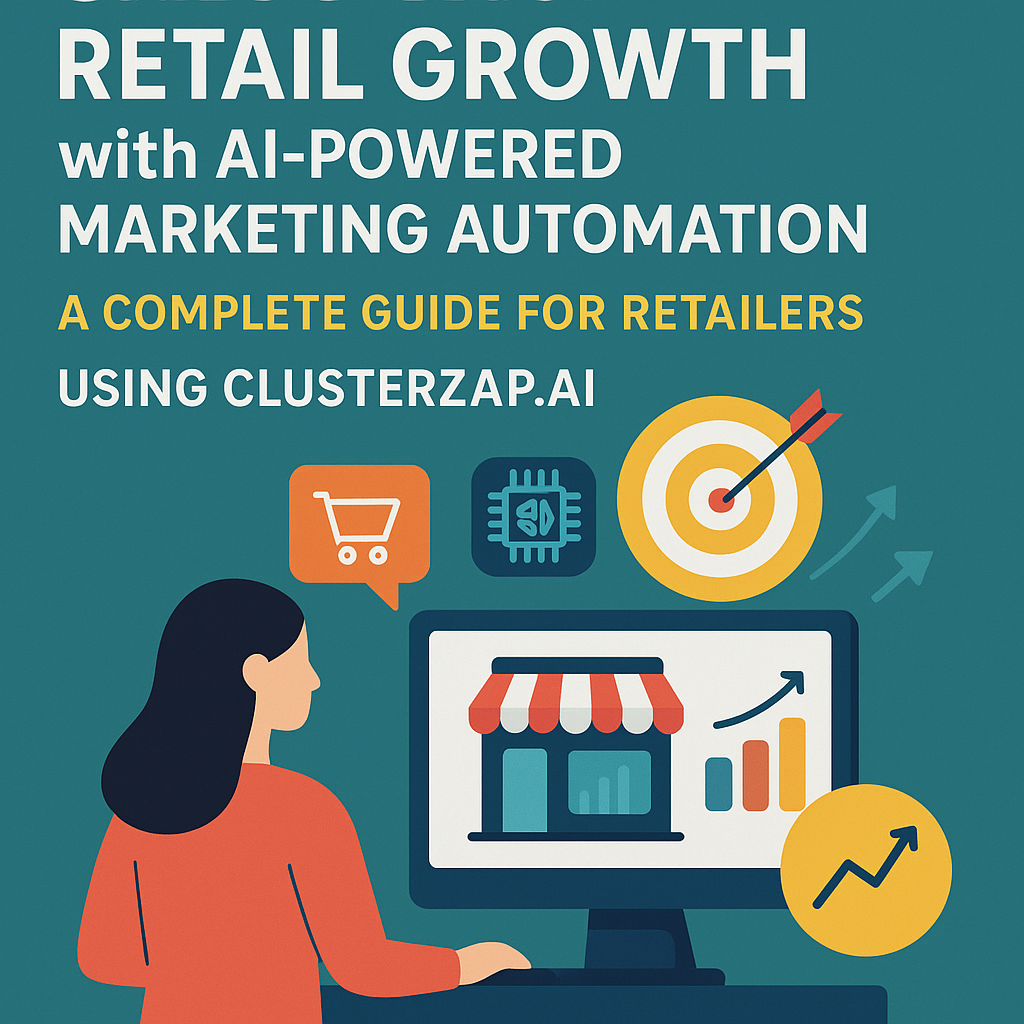Why Companies Should Adopt Marketing Automation
The Ultimate Guide for Modern Businesses
1. Introduction
In today’s fast-paced digital landscape, businesses face increasing challenges in engaging their audience, managing customer relationships, and staying competitive. As consumer expectations continue to rise, manual marketing processes no longer suffice. Enter marketing automation—a game-changing solution that empowers companies to streamline their marketing efforts, personalize communication at scale, and drive superior results.
Marketing automation is not merely a tool; it is a strategic enabler that can transform how businesses attract, engage, convert, and retain customers. In this comprehensive guide, we will explore why marketing automation has become essential, its key benefits, and how businesses across industries can leverage it for sustained growth.
2. What Is Marketing Automation?
Marketing automation refers to the use of software platforms and technologies designed to automate repetitive marketing tasks, manage multi-channel campaigns, nurture leads, and analyze customer behavior. These platforms enable businesses to deliver personalized experiences to their audience without the need for continuous manual effort.
Key functionalities often include:
Automated email campaigns
SMS and WhatsApp marketing
Social media scheduling
CRM integration
Lead scoring and segmentation
Landing page creation
AI-powered content generation
Analytics and reporting
By centralizing these functions, marketing automation helps businesses create cohesive and effective marketing strategies that are both efficient and scalable.
3. Why Marketing Automation Is No Longer Optional
3.1 Rising Customer Expectations
Customers today expect instant responses, personalized content, and seamless multi-channel experiences. Meeting these expectations manually is nearly impossible, especially as businesses grow.
3.2 Increasing Competition
Regardless of industry, businesses face intense competition. Marketing automation allows companies to respond faster, engage better, and offer superior customer experiences, giving them a competitive edge.
3.3 Data-Driven Marketing
With an explosion of data available, leveraging insights to tailor marketing efforts is critical. Marketing automation platforms analyze data in real-time, enabling informed decision-making and precision targeting.
3.4 Cost and Resource Efficiency
Hiring large marketing teams to handle complex, multi-channel campaigns can be prohibitively expensive. Automation reduces the need for large teams while enhancing productivity.
4. Key Benefits of Marketing Automation
4.1 Efficiency and Productivity
By automating routine tasks such as sending follow-up emails, scheduling social media posts, and segmenting leads, businesses save countless hours. This allows marketing teams to focus on strategy and creative tasks that require human input.
4.2 Personalization at Scale
Automation platforms use customer data to deliver highly personalized content across channels. Whether it’s addressing a customer by name or recommending products based on browsing history, automation makes it possible to personalize marketing for thousands—or millions—of customers.
4.3 Better Lead Nurturing
Marketing automation allows for the creation of sophisticated lead nurturing workflows. These workflows guide leads through the sales funnel with targeted content, increasing the likelihood of conversion.
4.4 Improved ROI and Cost Savings
Automated marketing campaigns often result in higher engagement rates and conversions, leading to better returns on investment. Additionally, businesses save on operational costs by reducing manual work.
4.5 Data-Driven Decision Making
Real-time analytics provided by automation platforms help marketers understand which campaigns are working, which aren’t, and why. This leads to continuous improvement and more effective marketing strategies.
4.6 Omnichannel Marketing Made Easy
Maintaining a consistent presence across email, SMS, social media, web, and mobile apps can be overwhelming. Marketing automation simplifies omnichannel management, ensuring a cohesive customer experience.
4.7 Improved Customer Retention
Automation isn’t just for acquisition. Post-sale engagement, loyalty programs, and personalized offers can all be automated to increase customer lifetime value.
5. Industries That Benefit the Most
5.1 E-commerce
Marketing automation powers cart abandonment emails, product recommendations, and loyalty programs, driving repeat purchases.
5.2 Healthcare
Appointment reminders, patient follow-ups, and wellness tips can be automated, improving patient engagement and retention.
5.3 Real Estate
Automated lead nurturing keeps potential buyers and tenants engaged until they’re ready to make a decision.
5.4 B2B Services
Lead scoring and nurturing workflows help B2B companies move prospects through lengthy sales cycles.
5.5 Education
Institutions can automate outreach to prospective students, manage enrollment campaigns, and maintain alumni engagement.
5.6 Hospitality and Travel
Automated booking confirmations, personalized travel recommendations, and post-trip follow-ups enhance customer satisfaction and loyalty.
6. Core Features of Modern Marketing Automation Platforms
6.1 Email, SMS, and WhatsApp Automation
Schedule and send personalized messages based on user behavior and predefined triggers.
6.2 CRM Integration
Sync marketing efforts with sales and customer support teams for a unified customer view.
6.3 Lead Scoring and Segmentation
Automatically rank leads based on engagement and demographic data to prioritize follow-up.
6.4 AI Content Generation
Use AI to create email copy, blog posts, and social media content, saving time and enhancing creativity.
6.5 Analytics and Reporting
Access real-time data on campaign performance, customer behavior, and ROI metrics.
6.6 Journey Builder / Workflow Automation
Create complex, multi-step customer journeys that adapt based on user actions and preferences.
7. Challenges Without Marketing Automation
Without marketing automation, businesses often face:
Missed engagement opportunities
Higher operational costs
Inconsistent messaging
Slow response times
Poor lead conversion rates
Limited scalability
Inefficient data use
Manual marketing processes can quickly become a bottleneck, preventing growth and leading to lost revenue opportunities.
8. Common Misconceptions About Marketing Automation
8.1 It’s Only for Large Companies
Many small and medium-sized businesses (SMBs) successfully use marketing automation to compete with larger players.
8.2 It’s Too Expensive
While initial investments are required, the long-term cost savings and revenue gains typically outweigh the expenses.
8.3 It Replaces Human Marketers
Automation augments human efforts rather than replacing them. It handles repetitive tasks, freeing up marketers for strategic work.
8.4 It’s Set-and-Forget
Effective marketing automation requires ongoing optimization and strategy adjustments.
9. Case Studies & Real-World Impact
Case Study 1: E-commerce Store Boosts Sales by 40%
An online retailer implemented cart abandonment emails, personalized recommendations, and loyalty program automations. Sales increased by 40% within six months.
Case Study 2: B2B SaaS Company Cuts Lead Conversion Time by 50%
By automating lead nurturing and aligning sales and marketing data, a SaaS company reduced the average time to convert leads by half.
Case Study 3: Healthcare Provider Increases Appointment Compliance
A regional clinic automated appointment reminders and patient follow-ups, resulting in a 30% decrease in missed appointments.
10. Steps to Successfully Adopt Marketing Automation
10.1 Set Clear Goals
Define what you want to achieve—lead generation, customer retention, increased sales, or improved engagement.
10.2 Choose the Right Platform
Select a marketing automation platform that aligns with your goals, budget, and existing tech stack.
10.3 Align Sales and Marketing Teams
Ensure both teams collaborate closely to create unified campaigns and share data effectively.
10.4 Train Your Team
Provide training to ensure your team can effectively use the platform and leverage its full capabilities.
10.5 Start Small and Scale
Begin with a few automated workflows and gradually expand as you measure success and identify new opportunities.
10.6 Continuously Optimize
Regularly review performance data and adjust your strategies to maximize results.
11. The Future of Marketing Automation
The future of marketing automation is closely tied to advancements in artificial intelligence (AI) and machine learning (ML). Expect to see:
Increased personalization through predictive analytics
Voice and conversational AI integrations
Smarter customer journey mapping
Real-time content generation
Advanced sentiment analysis
As technology evolves, marketing automation will become even more powerful, intuitive, and essential for business success.
12. Conclusion
Marketing automation is no longer a luxury—it’s a necessity for businesses aiming to thrive in the digital age. By adopting marketing automation, companies can streamline operations, enhance customer engagement, improve ROI, and gain a competitive edge.
Regardless of your industry or business size, marketing automation offers transformative potential. The sooner you embrace it, the sooner you can unlock growth opportunities, drive better customer experiences, and position your brand for long-term success.

